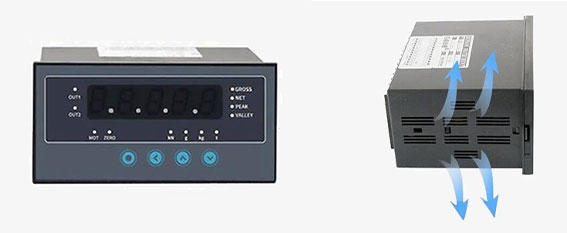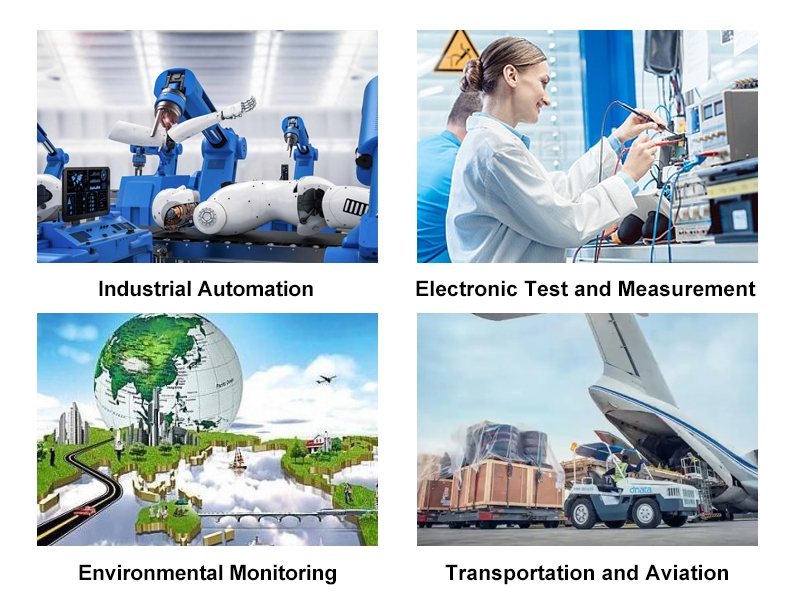A digital panel meter is an instrument used to measure and display various physical quantities or electrical signals. The core feature of a digital panel meter is the use of digital display technology to present measurements in digital form instead of using pointers or analog scales. Digital panel meters are used in a wide variety of fields including industry, laboratory, business, and daily life. sisco shop will explain in detail how digital panel meters work, the application areas, and the advantages and limitations of digital panel meters.
Definition
A digital panel meter displays the voltage, current, or other standard signaling values in electrical circuits in a digital, direct-reading format. Digital panel meter has the advantages of good stability, strong anti-interference, and high cost-effective, and the product size is small, can directly replace the original pointer instrument, widely used in voltage stabilizers, spot welders, calibration tables, and a variety of electrical equipment and control systems have a certain limitation of the size of the instrument.
Working Principle
Digital panel meter for voltage / current, analog signals from a variety of linear output sensors pulse signals, and other measurement data for digital processing, but also for conversion and display. In addition, it has an interface function for comparing and discriminating against arbitrary set values, and for transmitting data to computers and PLCs.
Main Components
- Digital Display: This is the core part of the digital panel meter, used to display the measured value. Common display technologies include LEDs and LCDs.
- Measuring Element or Sensor: A sensor or measuring element used to measure a specific physical quantity. For example, a temperature digital panel meter may include a temperature sensor and a voltage digital panel meter may be connected to a voltage input.
- Analog to Digital Converter (ADC): An analog-to-digital converter used to convert an analog signal into digital form. This is a key component within a digital panel meter that ensures that measurements are processed in digital form.
- Microprocessor/Controller: A digital panel meter typically contains an internal microprocessor or controller for processing and displaying measurement data. It may also support programmable functions and communication interfaces.
- Power Module: Provides the supply voltage and current required by the digital panel meter. This usually includes power conversion circuitry and a voltage regulator.
- User Interface: A digital panel meter is usually equipped with buttons, knobs, a touch screen, or a keypad to allow the user to make settings, switch functions, or view different measurement parameters.
- Enclosure: The enclosure is the external protective part of a digital panel meter and is used to protect the internal components from environmental factors such as humidity, dust, and mechanical damage.

Areas of Application
- Industrial Automation: Digital panel meters are used to monitor and control plant equipment and processes. They measure parameters such as temperature, pressure, flow, current, and voltage to ensure the stability and quality of production processes.
- Electronic Test and Measurement: Digital panel meters are an important tool for electronics engineers and technicians to measure the performance of circuit components, calibrate instruments, and perform circuit troubleshooting.
- Laboratory Measurements: Digital panel meters are commonly used in scientific laboratories to measure a variety of physical and chemical parameters in support of research and experimentation.
- Power System Monitoring: In the power industry, excellent digital panel meters are used to monitor voltage, current, power factor, and power consumption to ensure grid stability and reliability.
- Environmental Monitoring: Digital panel meters are used to monitor environmental parameters such as temperature, humidity, barometric pressure, and gas concentrations to support meteorology, environmental protection, and weather forecasting.
- Transportation and Aviation: Digital panel meters are used in vehicles such as airplanes, automobiles, and trains to monitor speed, altitude, oil pressure, and other critical parameters.
- Medical Devices: In medical devices, digital panel meters are used to monitor vital signs such as heart rate, blood pressure, respiratory rate, and body temperature.
- Construction and Real Estate: In the construction industry, digital panel meters are used to measure and display indoor environmental parameters to ensure building comfort and energy efficiency.
- Communications and Information Technology: Digital panel meters are used in communications equipment, computer networks, and data centers to monitor power, temperature, and humidity.

Advantages
- Accuracy and Repeatability: Digital panel meters typically have high measurement accuracy and repeatability, providing accurate measurement results.
- Digital Display: Digital displays are easy to read and less prone to ambiguity, reducing reading errors.
- Versatility: Many digital panel meters have multiple measurement functions that can be adapted to different applications.
- Real-time Data: Digital panel meters can display measurement results in real-time, enabling operators to take timely action.
- Remote Monitoring: Some digital panel meters have communication interfaces that allow measurement data to be transmitted to a remote location for remote monitoring.
- Durability: Digital panel meters often have ruggedized housings that can withstand use in harsh environmental conditions.
Disadvantages
- Cost: Highly accurate and multifunctional digital panel meters are often expensive and are not suitable for some applications with limited budgets.
- Energy Consumption: Some digital panel meters consume more power, especially in the normally open state, which can have an impact on energy efficiency.
- Complexity: For some users, the functions and operating interface of digital panel meters may appear complex and require some training and proficiency.
- Limitations: Some digital panel meters may be limited to specific types of measurements, making it difficult to adapt to diverse applications.
Digital panel meters are a key measurement and display tool that plays an important role in a variety of fields. They provide highly accurate and repeatable measurements by converting analog signals into digital form and have a wide variety of application areas. However, when selecting a digital panel meter that suits the needs of a particular application, factors such as its type, accuracy, functionality, and cost need to be considered to ensure the best possible measurement results. The continuous development and improvement of digital panel meters will continue to drive progress in science, industry, and technology.

